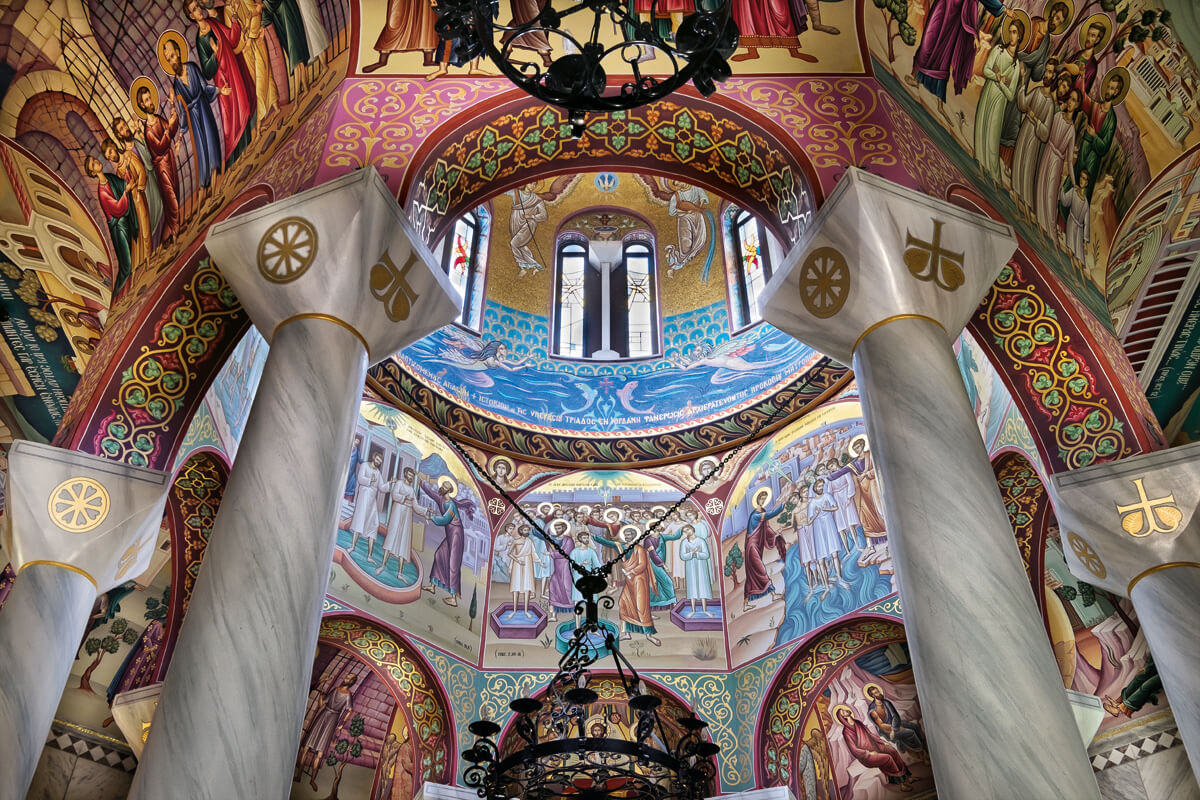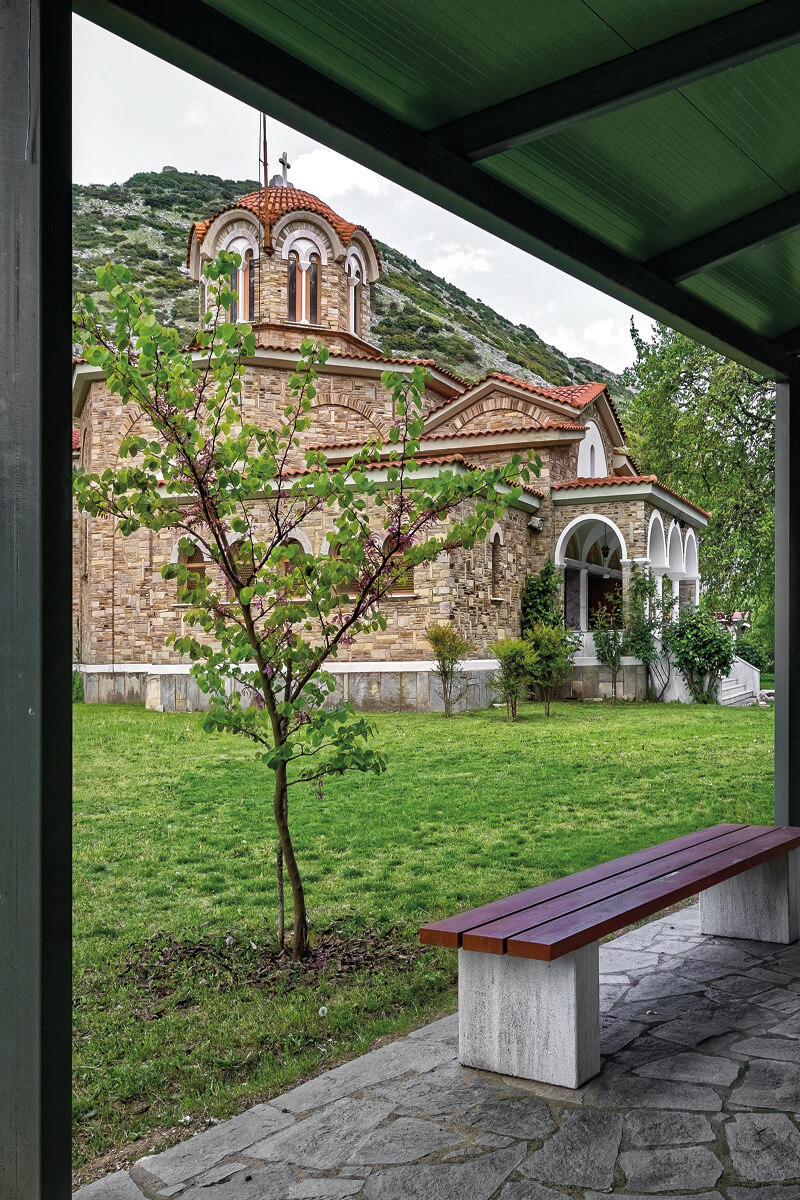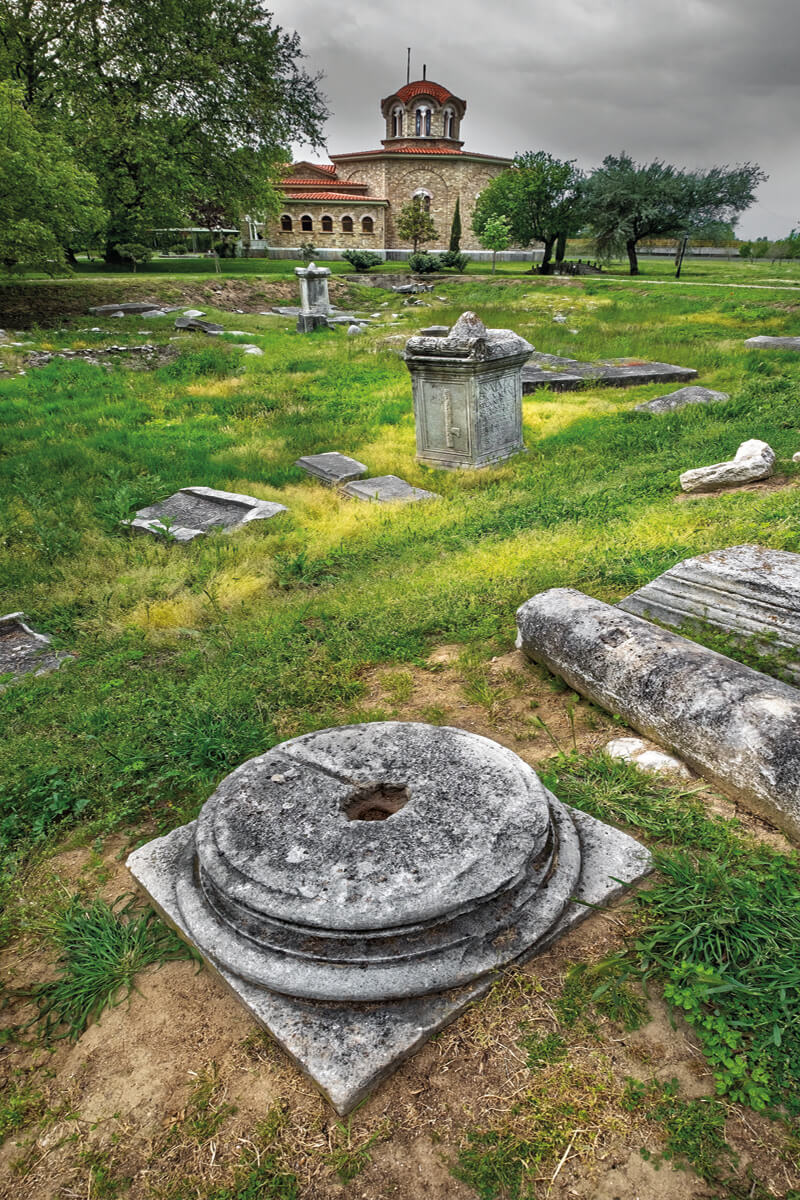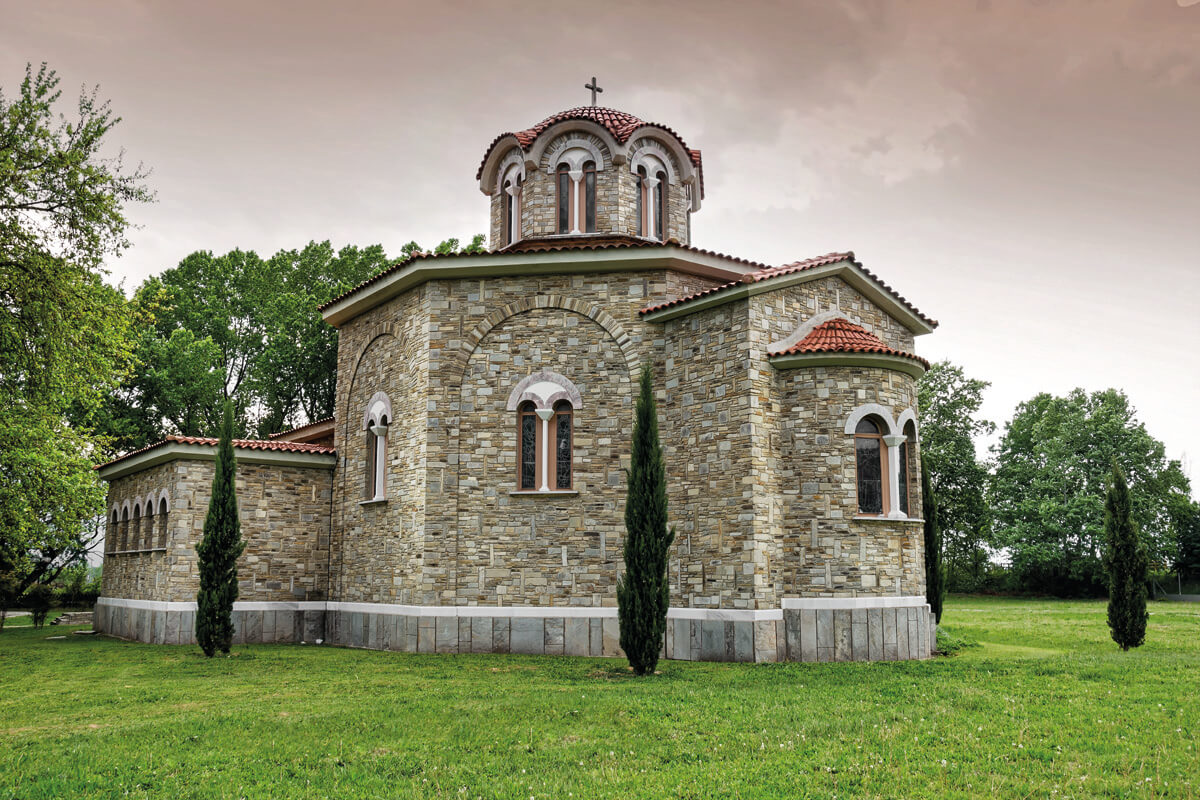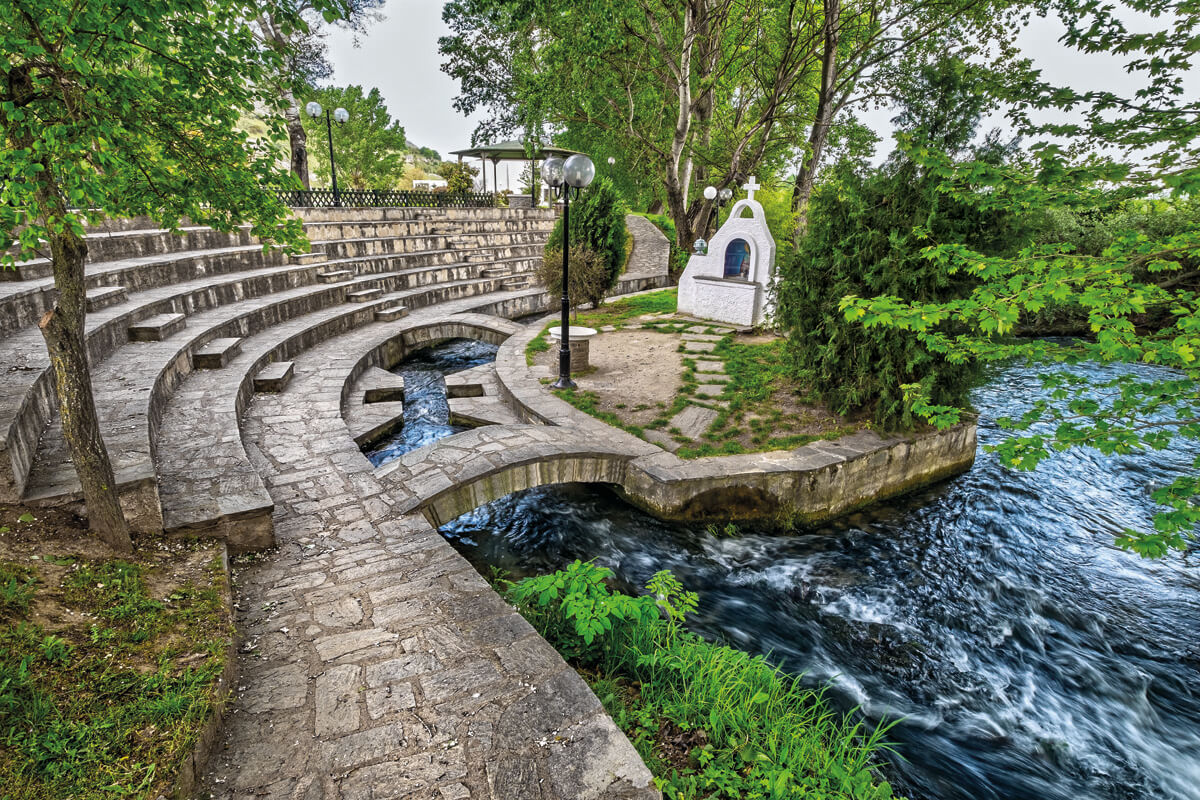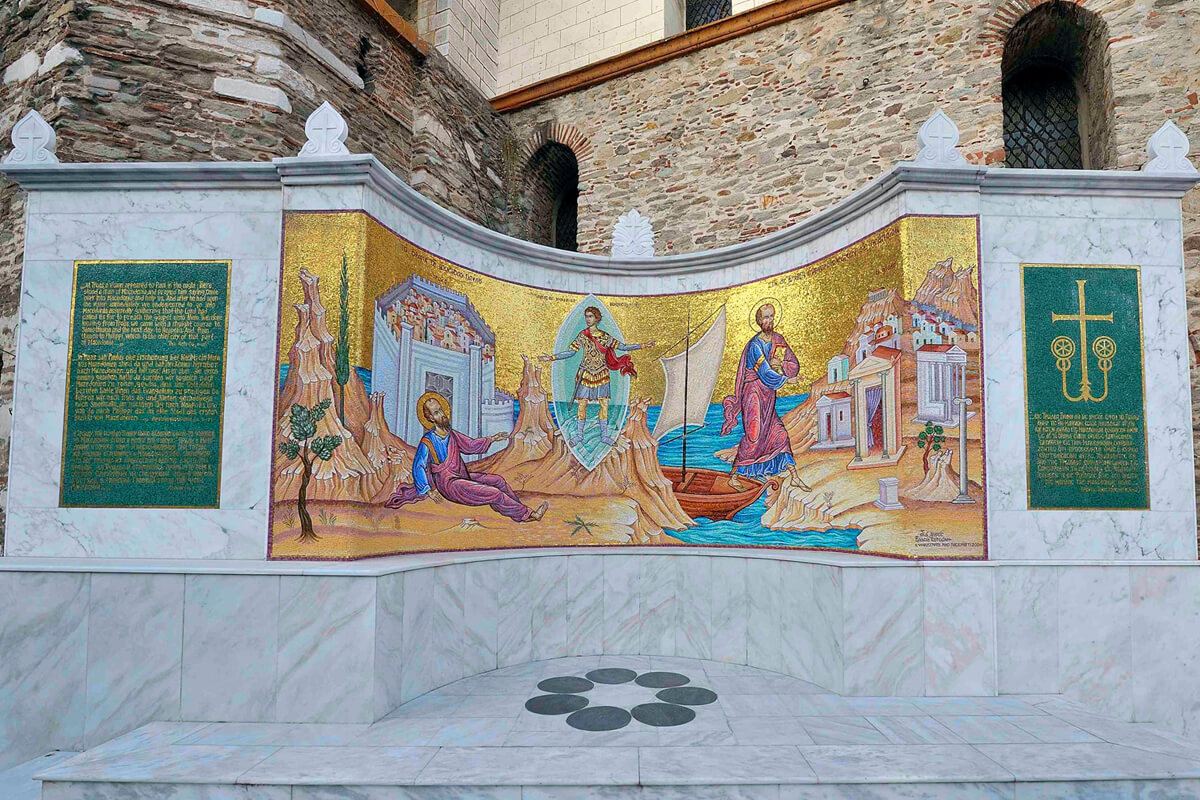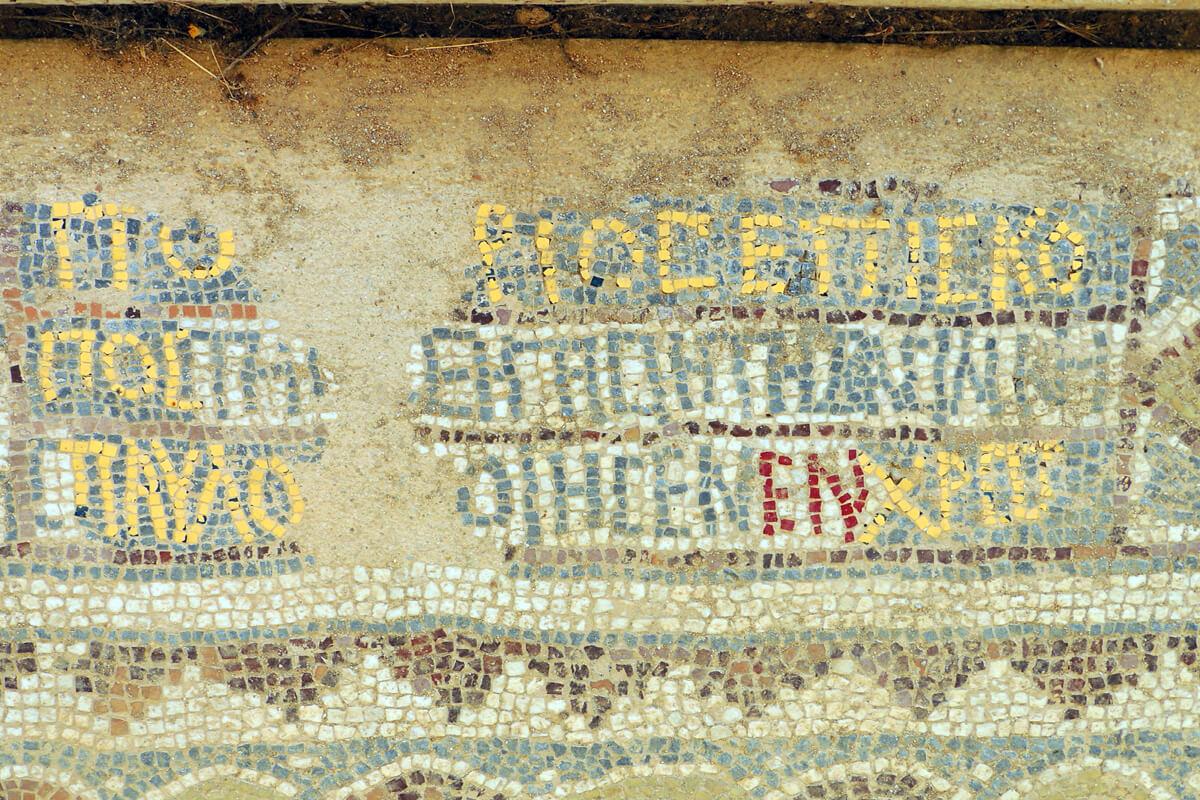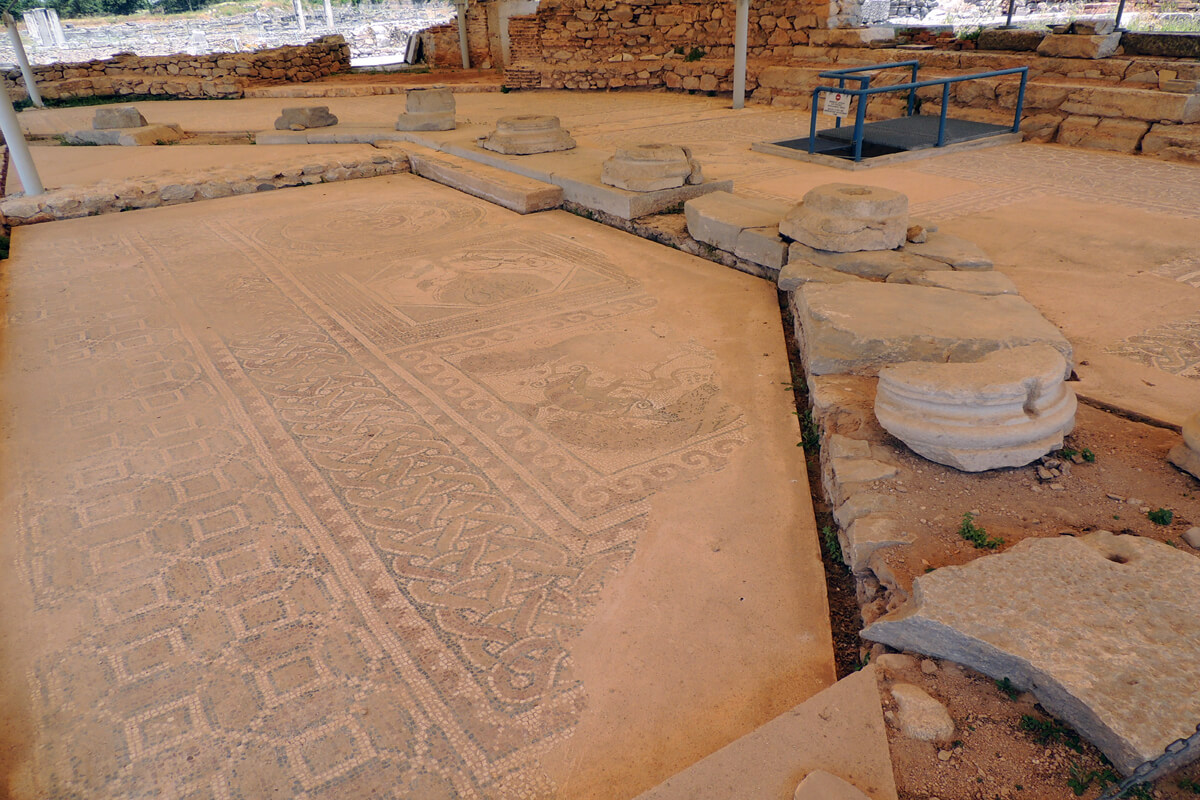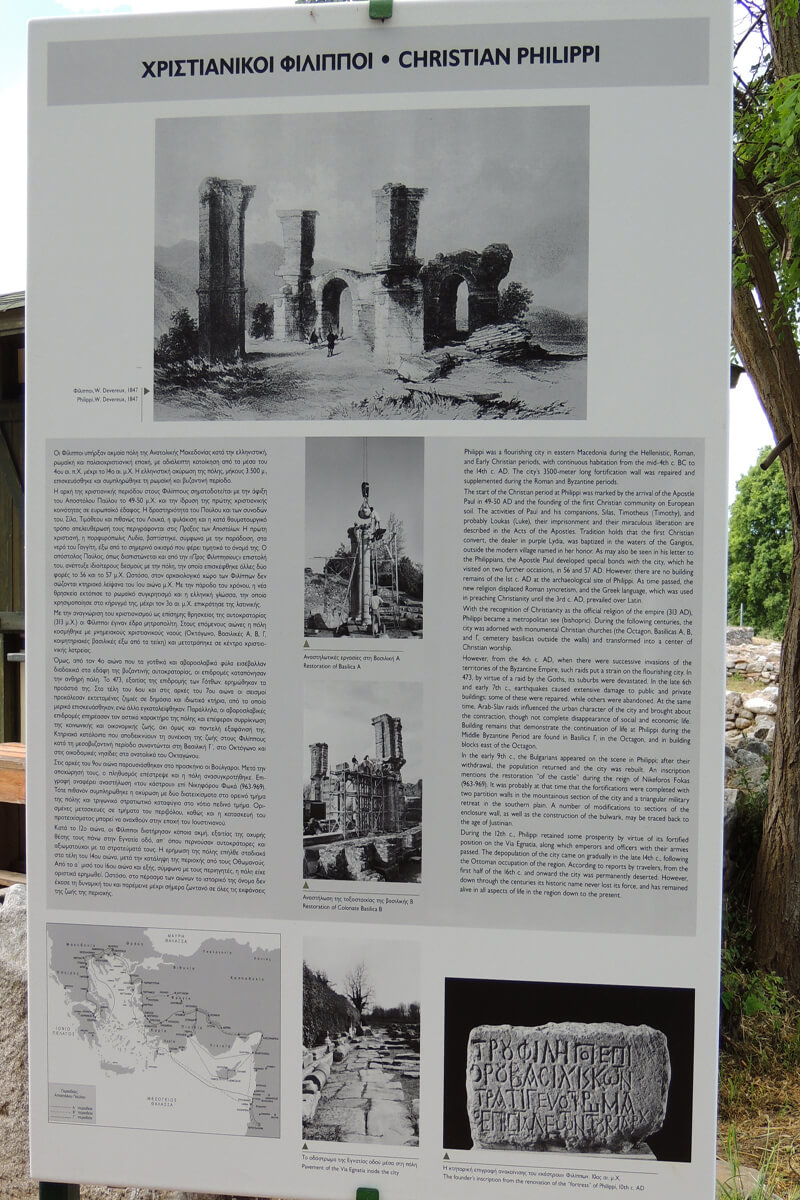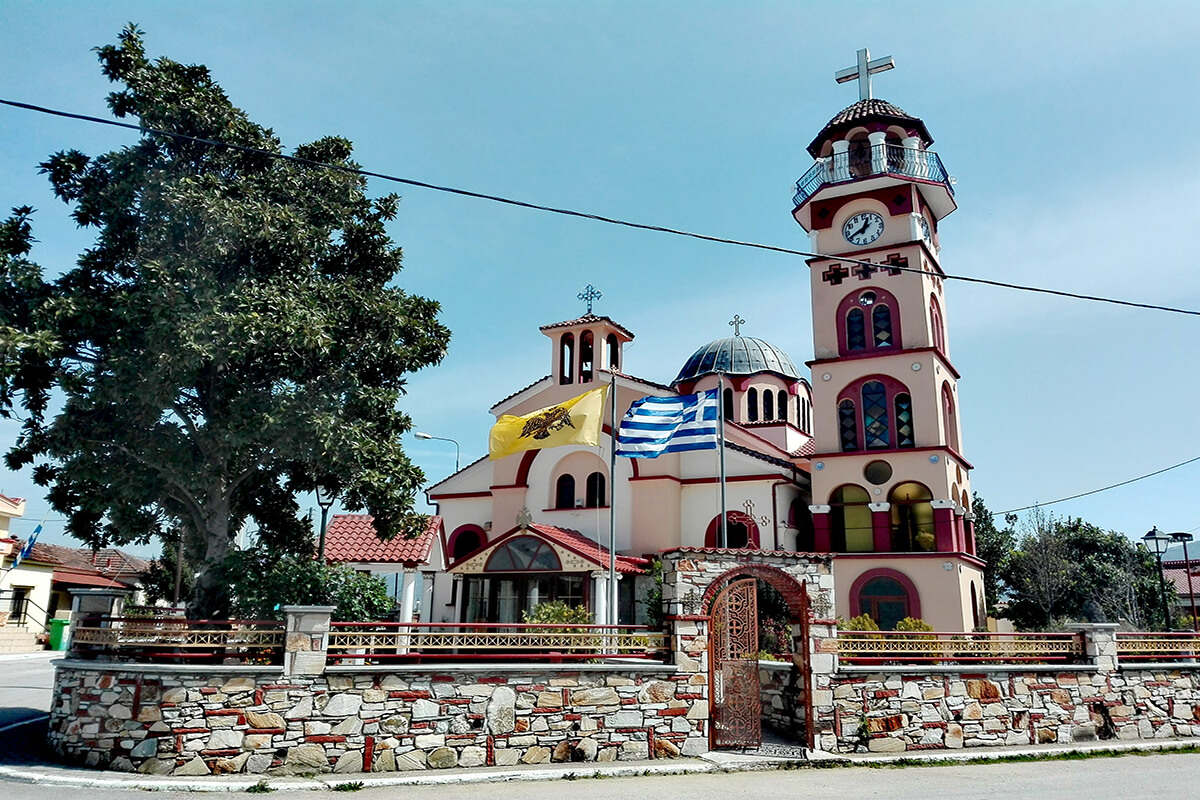When Paul the Apostle visited Philippi in AD 49/50, founding the first Christian Church in Europe, the appearance of the city changed. Among those who heard the Apostle Paul’s sermon was a woman called Lydia. Lydia decided to be baptised in the waters of the River Zygaktis and she thus became the first Christian woman in the whole of history. The Apostle Paul visited Philippi on another three occasions, a fact that, along with his Letter to the Philippians, shows the long and close relationship between the saint and the community of Philippi.
The modern Baptistery of St Lydia (1974), with an octagonal design, can today be found very close by to the archaeological site. On the adjacent bank of the River Zygaktis there is an open-air baptistery within the flowing stream, similar to those that survive in the Early Christian basilicas of Philippi in the shape of a cross. On 20 May each year, the day of memory for St Lydia of Thyatira, an adult baptism is performed in the River Zygaktis after the Divine Liturgy. Being present at the mystery of baptism is a unique spiritual experience.

